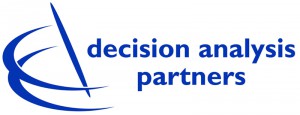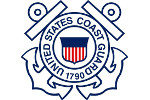decision analysis partners assisted in the Procurement Activities project, or PROACTIV for the U.S. Coast Guard. In the first phase of the program, decision analysis partners used its decision mapping methodology to identify key areas of focus within the supply chain that had the greatest potential for overall performance improvement. In the second phase, using advanced statistical analysis software from the SAS Institute, the team focused on capturing benefit.
from an article by CDR David Hartley, USCG
 The U.S. Coast Guard operates a fleet of over 200 aircraft, ranging from helicopter to jet to accomplish its wide-ranging missions in a demanding maritime environment. decision analysis partners assisted the Coast Guard with breakthrough analyses to improve its supply chain management and ultimately improve fleet availability and mission performance. In the first phase of the program, the Aircraft and Repair Service Center (ARSC) in Elizabeth City, NC teamed with decision analysis partners who used decision mapping and risk analysis methods to identify supply chain hot spots. In the second phase, using advanced statistical analysis software from the SAS Institute, the team focused on capturing the top procurement activities most likely to influence reliability of product delivery, repair price and durability. The first step led to the construction of the Coast Guard aviation’s first-ever data warehouse. The warehouse aggregates and melds vital day-to-day transactional data into useful informational views. Staging key data elements empowered ARSC Inventory Managers and Procurement professionals to cut across a sea of data to focus on a comprehensive analysis of procurement drivers impacting key business processes. The ARSC used a “tiger team” approach, supported by decision analysis partners, to implement process improvements in the procurement area targeted in the analysis. The team identified ways to reduce internal inefficiencies by investigating candidate items through the previously listed criterion. With ARSC’s $130 million annual repair/replenishment budget as the backdrop, the analysis pointed to substantial opportunities to tighten links in the supply chain between government and supplier. The analysis also provided a framework for assessing which parts could be repaired faster and cheaper internally versus externally. The analytical framework will enable ARSC to more effectively leverage its in-house parts repair capabilities.
The U.S. Coast Guard operates a fleet of over 200 aircraft, ranging from helicopter to jet to accomplish its wide-ranging missions in a demanding maritime environment. decision analysis partners assisted the Coast Guard with breakthrough analyses to improve its supply chain management and ultimately improve fleet availability and mission performance. In the first phase of the program, the Aircraft and Repair Service Center (ARSC) in Elizabeth City, NC teamed with decision analysis partners who used decision mapping and risk analysis methods to identify supply chain hot spots. In the second phase, using advanced statistical analysis software from the SAS Institute, the team focused on capturing the top procurement activities most likely to influence reliability of product delivery, repair price and durability. The first step led to the construction of the Coast Guard aviation’s first-ever data warehouse. The warehouse aggregates and melds vital day-to-day transactional data into useful informational views. Staging key data elements empowered ARSC Inventory Managers and Procurement professionals to cut across a sea of data to focus on a comprehensive analysis of procurement drivers impacting key business processes. The ARSC used a “tiger team” approach, supported by decision analysis partners, to implement process improvements in the procurement area targeted in the analysis. The team identified ways to reduce internal inefficiencies by investigating candidate items through the previously listed criterion. With ARSC’s $130 million annual repair/replenishment budget as the backdrop, the analysis pointed to substantial opportunities to tighten links in the supply chain between government and supplier. The analysis also provided a framework for assessing which parts could be repaired faster and cheaper internally versus externally. The analytical framework will enable ARSC to more effectively leverage its in-house parts repair capabilities.




